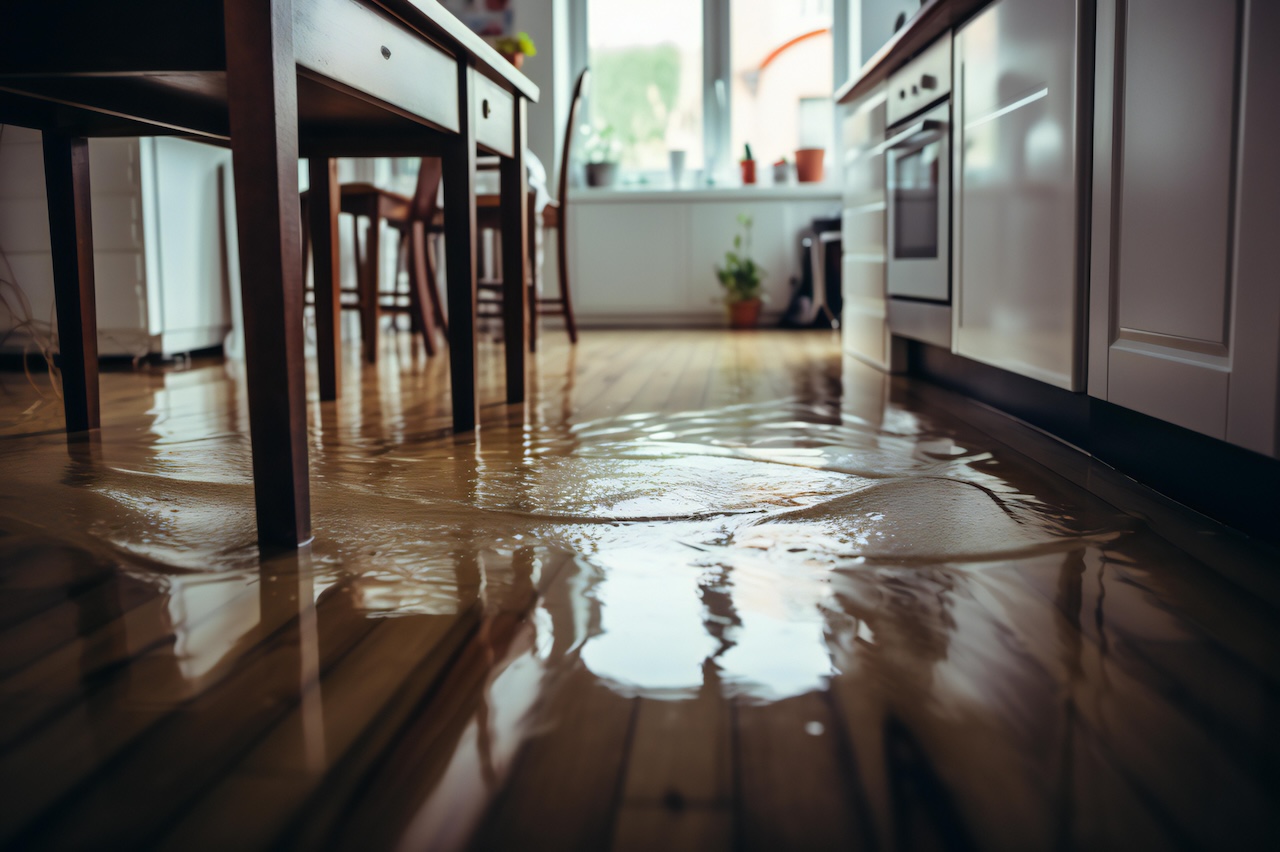New tool could help Florida homeowners weather flood risks, lower insurance costs
With flood risks increasing from extreme weather events like hurricanes and even routine plumbing issues, a team from the University of Florida’s College of Design, Construction and Planning is helping Florida homeowners make smarter choices about building materials and interior finishes that better protect their homes and potentially save on their insurance premiums.
Lisa Platt, Ph.D., an assistant professor in the department of interior design and a researcher within the Florida Institute for Built Environment Resilience, or FIBER, and Arezoo Zeinali, a graduate research assistant in Platt’s Design Dynamics lab have developed a groundbreaking tool that helps homeowners, builders and policymakers make better, science-informed choices about what materials are used to build and furnish a house.
“The platform helps people choose building materials that are less likely to be damaged if a disaster strikes.” —Lisa Platt, Ph.D., an assistant professor in the department of interior design and a researcher within the Florida Institute for Built Environment Resilience, or FIBER
The system, called SAMPL™ — short for Sustainable Adaptive Material Performance Level — goes beyond checklists and code books. It uses computational modeling to evaluate how building materials respond to real-world risks, especially water-related damage.
“The platform helps people choose building materials that are less likely to be damaged if a disaster strikes,” said Platt, who originally developed it as a teaching tool to guide students in making smarter material choices.
To tailor the SAMPL™ platform for real-world application, Platt, Zeinali and research colleagues at FIBER refined the system specifically to assess flood-related risks. The work was part of a state-funded initiative commissioned by the Florida Office of Insurance Regulation, which asked UF researchers at FIBER to explore how enhancing the resilience of single-family homes could help lower insurance premiums.
By adjusting SAMPL’s risk formulas to emphasize moisture resistance, material imperviousness and failure likelihood in flood scenarios, the team produced a version of the platform capable of supporting data-driven decisions about which materials are most likely to withstand or recover from the risk water intrusion. The findings contributed to the development of the Resilience Inference Performance Level (RIPL) report, which aims to help insurance regulators, builders and homeowners identify cost-saving, risk-reducing strategies for residential construction.
A smart system for resilient design
SAMPL analyzes materials based on three key characteristics:
- Strength: How durable the material is under pressure from specific environmental conditions and regional risk factors.
- Symbiosis: How the material interacts with environmental conditions, particularly its resistance to moisture.
- Sustainability: How environmentally responsible the material is, factoring in things like embodied carbon and chemical transparency.
Platt, Zeinali and team, including Jeff Carney, an associate professor in the UF School of Architecture and the director of FIBER, and UF interior design and architecture students, have compiled a relational database of material data — everything from the hardness of flooring types to moisture-resistance ratings and environmental product declarations. The system assigns each material a resilience score based on its overall potential for failure based on a tunable risk level, allowing users to compare options and choose those most suited to their climate risks.
And it’s not just structural materials. SAMPL also evaluates common finishings and furnishings such as carpet types, wood varieties, porcelain tiles and more. While the system does not recommend brands, it gives users a sense of how different material types stack up in terms of performance and safety.

“We’re looking at materials as a proactive strategy,” Platt said. “Then we’re layering in smart-home technology, including systems for preventing water intrusion, automatic shutoff valves and foundation sensors, as a reactive safeguard. Together, they form a home design that connects risk-reducing and resilience-boosting strategies with potential insurance savings.”
Informing policy, protecting homes
The project aligns with proposed Florida legislation calling for tax incentives for building with resilient materials. The ultimate goal, Platt said, is to provide homeowners and insurance regulators with a shared rubric: if a home meets certain resilience benchmarks, it could qualify for lower premiums.
The SAMPL platform is designed to be adaptable beyond Florida. While it’s currently calibrated to assess flood and storm risks common to coastal regions, it could be tuned for threats like extreme heat, wildfire, or other types of regional risks.
Platt, who has worked as both a designer and academic, said her personal experience as a Florida homeowner drives her research.
“I think about protecting my family just like anyone else,” she said. “Our goal as scientists and educators is to help others make better decisions that protect their homes, their health and their financial stability.
“SAMPL isn’t perfect, and it can’t predict everything,” Platt continued, “but it’s allowing us to move in the right direction for leveraging data to inform reliable design decisions.”
Toward an Open Access Future
Looking ahead, Platt envisions SAMPL becoming an open-access resource for anyone involved in homebuilding or renovation — especially in climate-vulnerable areas.
“This isn’t about telling people how to design their homes,” she said. “It’s about giving them the best information we have, in a usable form, so they can make informed choices that protect what matters most.”
